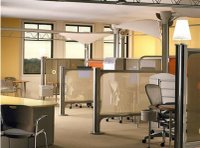
On October 11th, 2006 I presented at the EDUCAUSE international conference in Dallas. The program, entitled, Rules of Engagement, presented a variety of strategies to engage the "Millennial" student. Topics covered included learning space design, digital video, Video Over IP, Tablet PC technologies, and student response systems. Of particular interest to the group was a discussion on how to design and develop collaborative learning spaces. There is a growing trend for universities and colleges to set aside spaces in new and remodeled spaces where students can interact and collaborate on specific projects. The key is to decide early on what the teaching and learning activities will be. From there, it is important to consider both room design and technologies employed simultaneously. After your space has been completed, it is important to make sure the space is being utilized as you envisioned. If the space isn't promoting collaboration, it could be due to several reasons. One reason could be that your faculty haven't developed curriculum that focuses on collaborative projects. Another obstacle is that students may not be aware that they can talk openly in newly developed collaborative spaces. This is a common phenomena in newly created library collaborative learning space. Careful planning, effective implementation, and prudent assessment will yield successful results.






